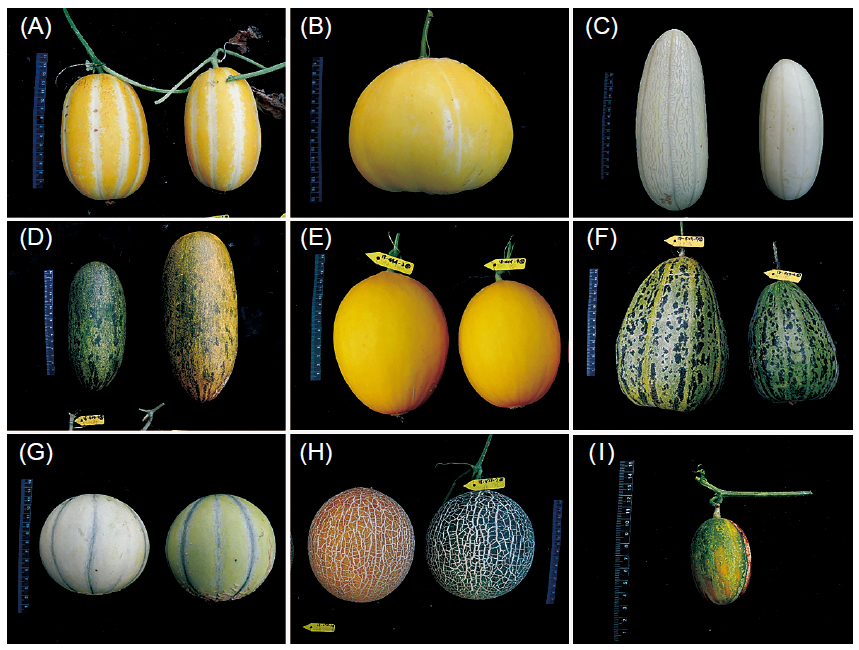All issues

Author:Ssu-Yu Lin, Jin-Hsing Huang, and Yu-Hwa Wang*
Abstract:
As climate changes rapidly and the demands of diverse melon increase, melon market has urgent needs of commercial lines with stress-resistance, varied appearance and high-quality fruits. Because genetic diversity is the basis of melon breeding, comprehensive understanding of the melon germplasm and breeding line is essential. In this study, 102 melon accessions are collected and 32 horticultural traits are investigated in two seasons. According to the principle component analysis, two subspecies- Cucumis melo ssp. melo and ssp. agrestis, can be separated clearly, and major botanical groups can also be distinguished. Screening for resistance to powdery mildew pathogen (Podosphaera xanthii race 1) is also conducted in this study by leaf-disc inoculation. Results show that 30 accessions possess constant resistance and most of them belong to botanical group momordica, acidulus and reticulatus. With the horticultural traits and powdery mildew resistance of germplasm and breeding line, manpower and time required at initial stage of breeding can be significantly reduced.
Key words:Melon, Morphological diversity, Powdery mildew, Germplasm
Download:![]() PDF Links
PDF Links
- 1. Using Digital Soil Mapping to Predict Soil Organic Carbon Stocks in Zhuoshui River Basin
- 2. Taxonomic Review of the Genus Asiophrida Medvedev, 1999 in Taiwan (Insecta: Coleoptera: Chrysomelidae: Galerucinae: Alticini), with Notes on Biology
- 3. Development of a Technique for Forecasting (or Pre-Detection) Anthracnose Disease Incidences of Green Mature Bagging Mango Fruits
 Submit your manuscript
Submit your manuscript
 Guide for authors
Guide for authors